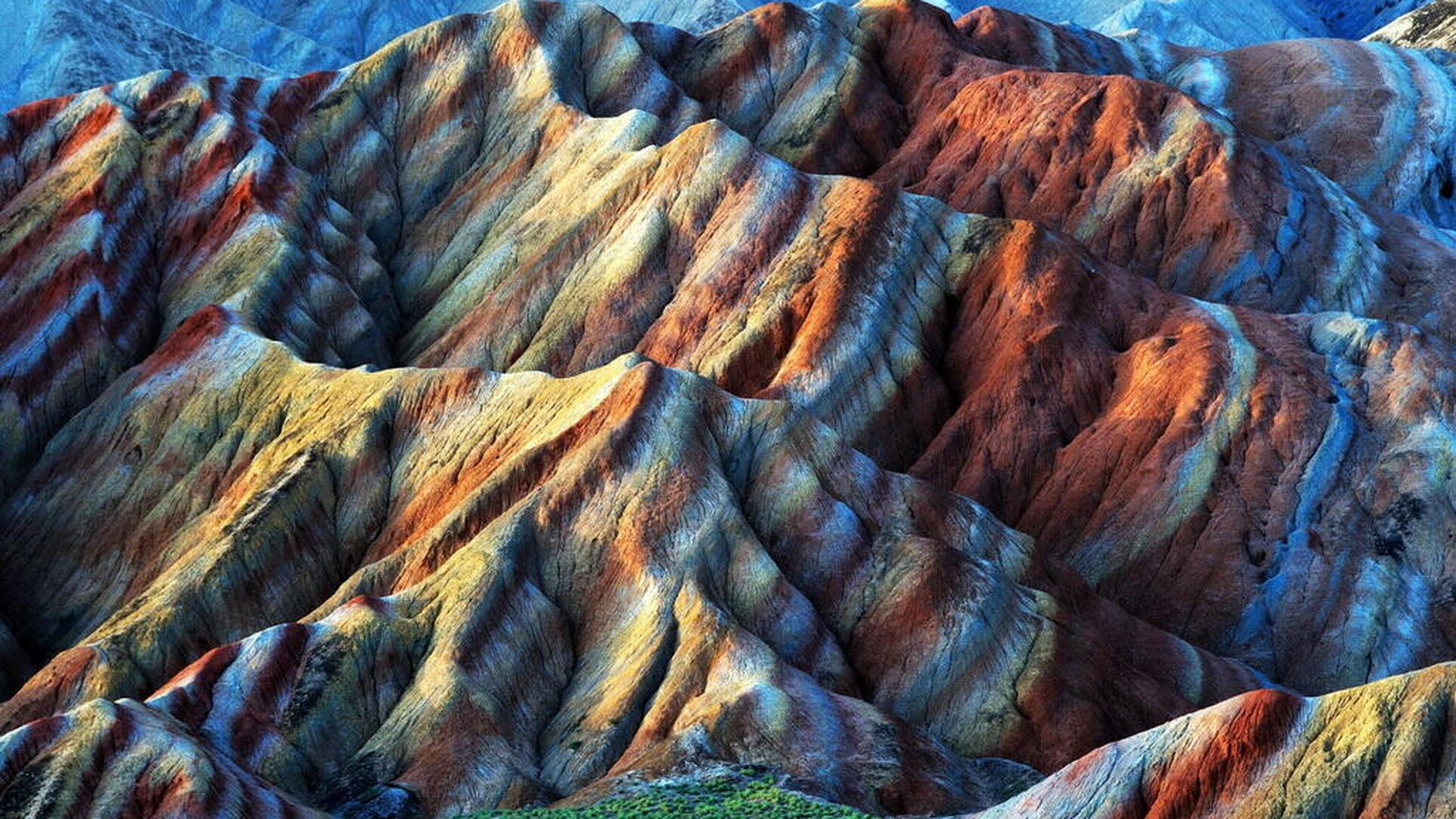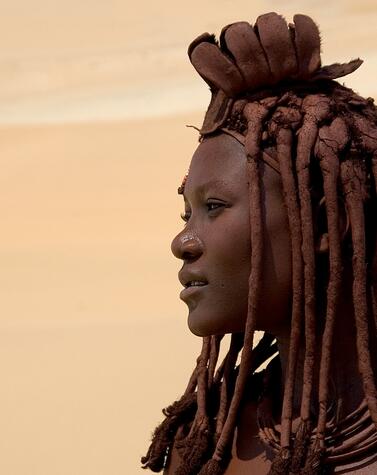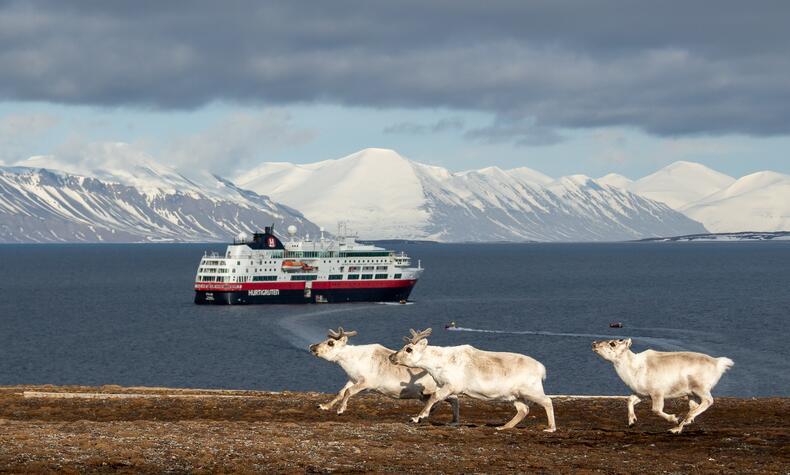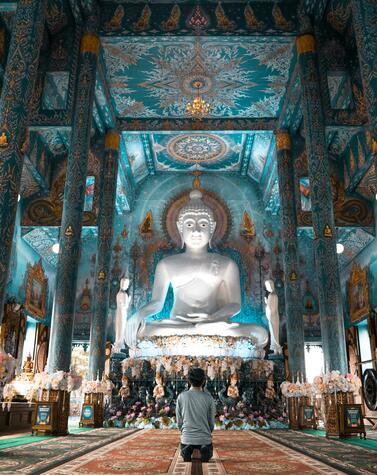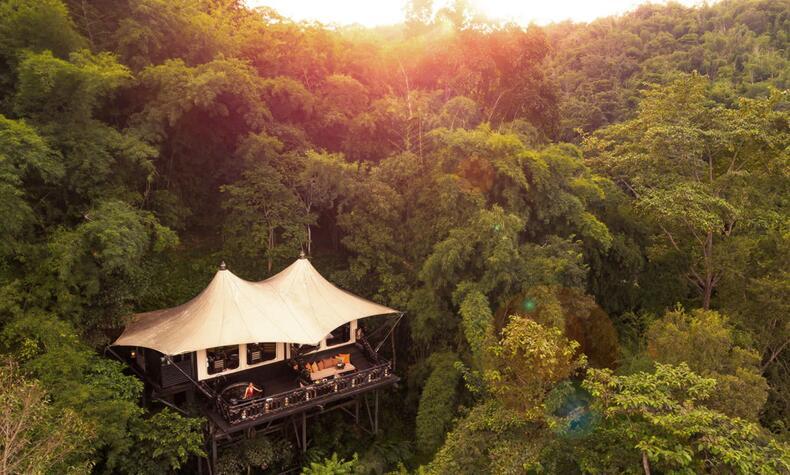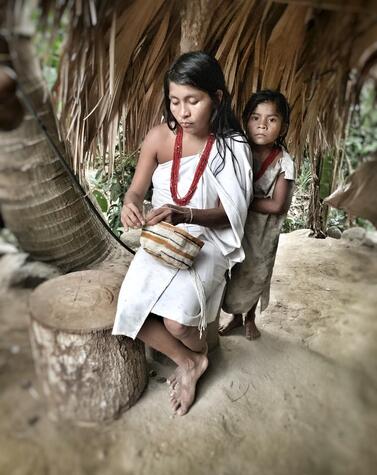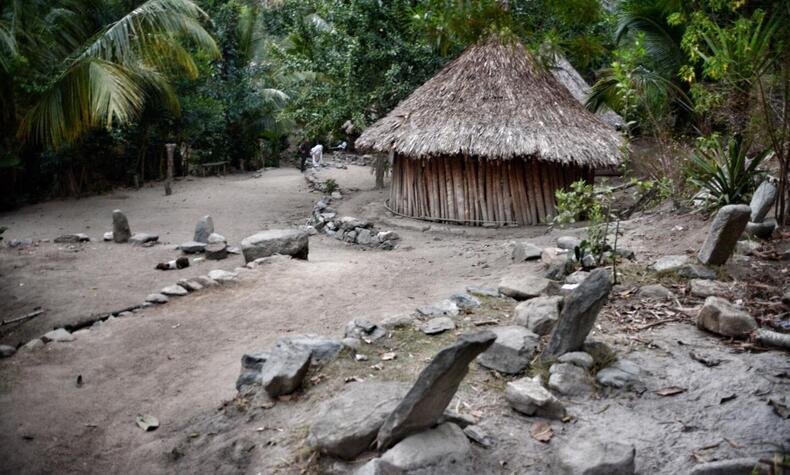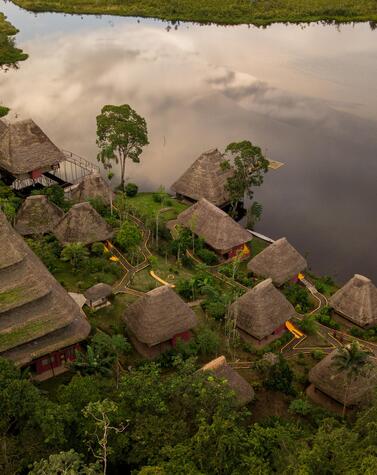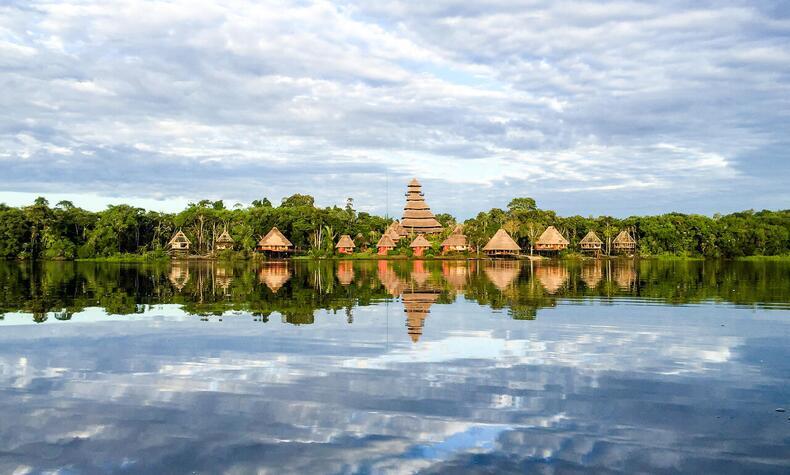Somewhere over the rainbow
Imagine all the colors of the rainbow staining the undulating peaks of unique ranges of mountains, able to shock and amaze anybody, no matter what they've seen or where they've traveled to before.
The so-called Rainbow Mountains of China, located in the Zhangye Danxia National Geological Park, in the northwest of the country, are one of the geological wonders found on our planet.
Named a UNESCO World Heritage Site in 2009, the Rainbow Mountains are Cretaceous sandstones and siltstones that were deposited in China before the Himalayan Mountains were formed. The sand and siltstone were deposited with iron and trace elements that provided the key ingredient to form the colors we see today.
When the Indian plate collided with the Eurasian plate approximately 55 million years ago, the collision caused flat sandstones to break and fold and sedimentary rocks that lay far below the earth's surface to appear, in a process that resulted in the mountains we see today.
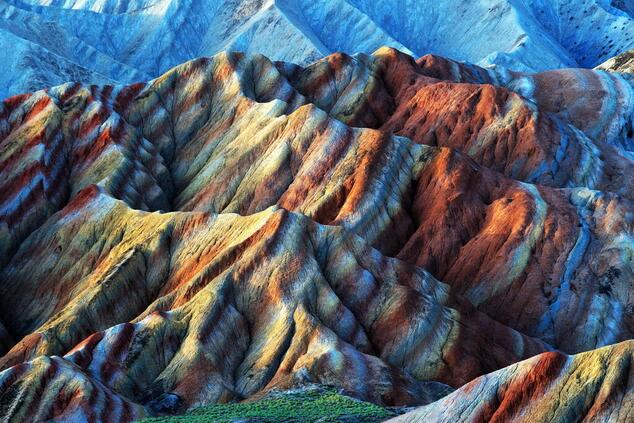
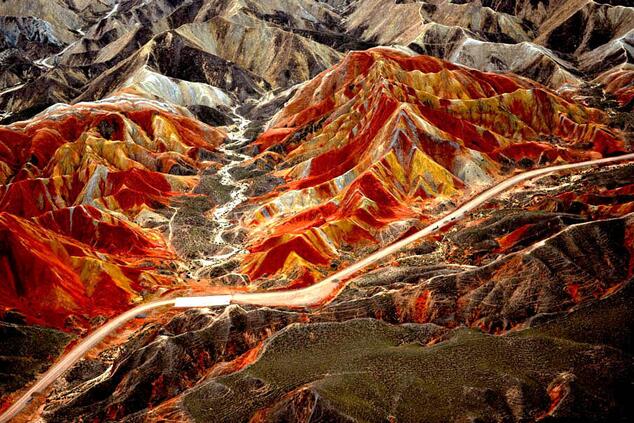
How do you get such varied and fascinating colors? Groundwater moves through the sandstone grains and deposits trace minerals between the grains. The primary color is a dark red sandstone caused by a layer of iron oxide. Most of the time, iron oxides provide a dark red pigment. However, there are cases where the oxides form different colors.
For example, limonite will produce a brown or yellow staining of sandstones, magnetite may generate a black color. If iron sulfide is present, a metallic yellow color will result because of the sulfur. The green color is often due to chlorite or iron silicate clays. These are just a few examples of how certain minerals can alter the color of the sandstones that form these mountains and create this fascinating color range.
The area, of approximately 200 square kilometers in the Zhangye Danxia Geological Park, is ideal for different hiking trails and admiring the chromatic changes of the mountain. Another way to observe this unique geological spectacle is on the back of a camel, one of the animals traditionally used as a means of transportation in Gansu province. And if you want to enjoy this rainbow landscape from another perspective, a hot-air balloon ride will allow you to get a magical view of this natural phenomenon.
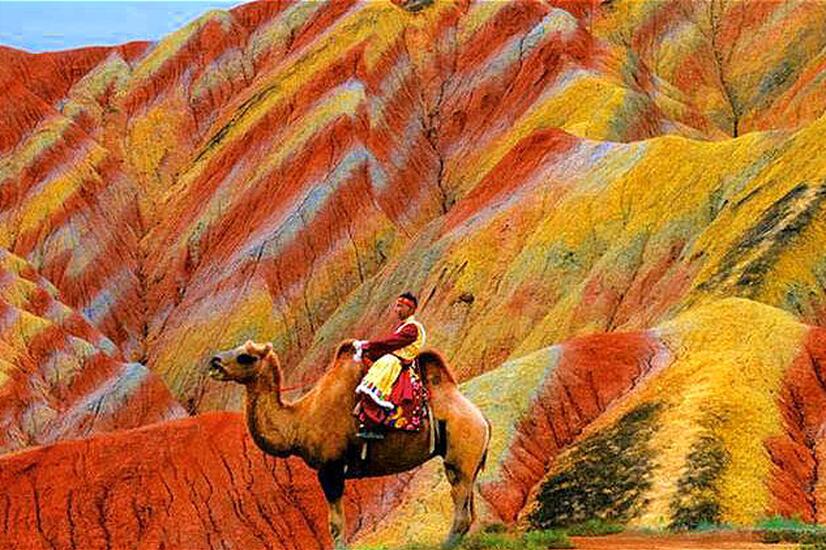
Vinicunca or the "Mountain of the 7 Colors"
Near Cusco, in Peru, there is another Rainbow Mountain, Vinicunca, also called "The Mountain of the Seven Colors." The ancient Incas believed that masculine energy flowed from the mountain's foundations, the same energy that fertilized Pachamama. Even today, the locals consider Vinicunca a sacred mountain, so they perform rituals such as the "payment to the earth" as a form of gratitude for what nature gives them.
To reach the viewpoint, at 5,200 meters altitude, from the beginning of the trail, you have to walk about 12 kilometers, and it is an experience recommended for experienced hikers.
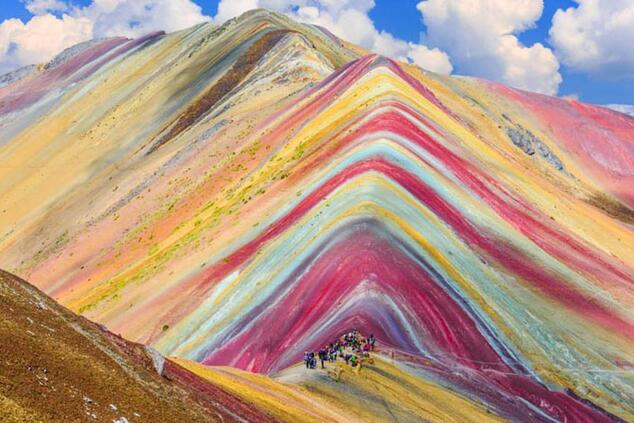
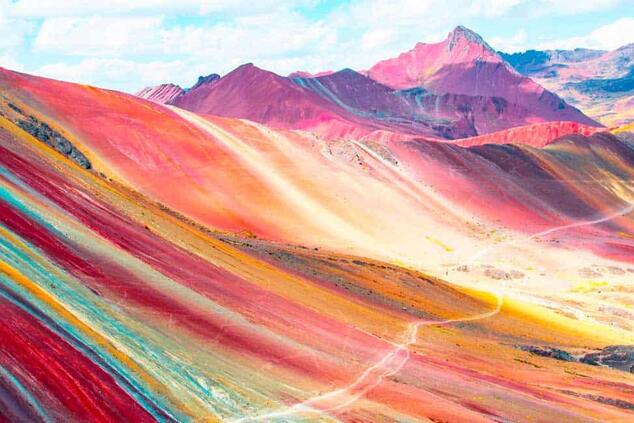
Its slopes and peaks are tinged with intense shades of fuchsia, turquoise, lavender, and gold. The colors that characterize this mountain were formed when the ice that covered the area millions of years ago began to melt, and the water mixed with the minerals in the soil, turning the earth into many colors. The red areas are due to oxide mixtures, the yellows are due to limonite combined with sulfur, the purples to the mixture of clay with calcium carbonate, and the greens to copper oxide.
The "Hill of the 14 Colors" in Argentina
In the Serranía del Hornocal, 25 kilometers from the city of Humahuaca in the province of Jujuy, in Argentina, stands a colorful mountain known as the "Cerro de los 14 colores", This original geological formation can be admired driving along a 24-kilometer-long winding road, where you go from 3,000 meters to 4,200 meters in altitude until you reach a viewpoint from where you can admire its 14 peaks dyed in striking colors. Sunset is the best time of the day to admire the magic of all the colors of this mountain.
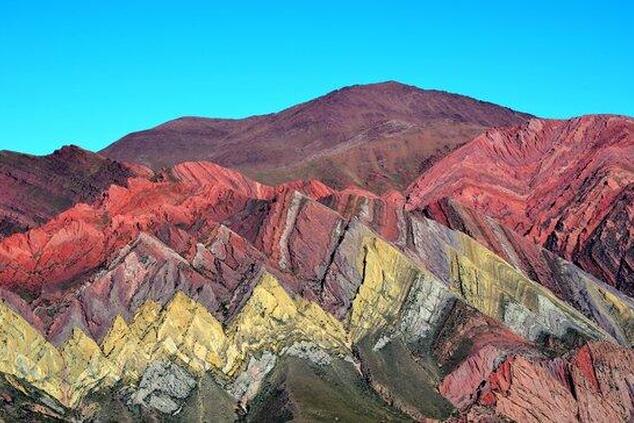
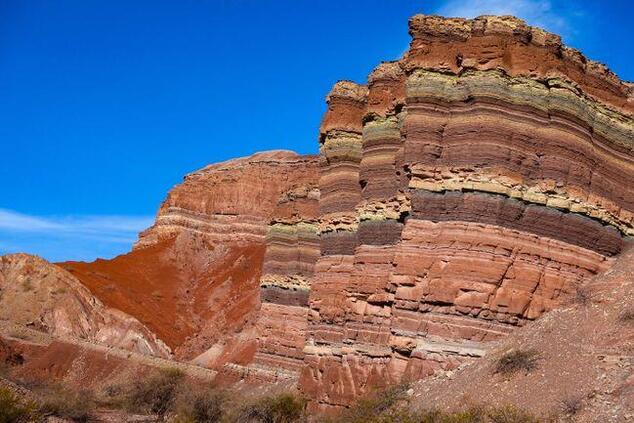
El Hornocal is a stratified sedimentary formation more than 75 million years old, formed by ochre, yellow, green, and whitish-colored limestone where iron failed to oxidize. The colors are made up of various minerals that, when eroded, left the characteristic triangular formations on the slopes of these mountains.
These multicolored mountains in China, Peru, and Argentina make up one of the most fascinating geological phenomena we can find in the world. Surely young Dorothy from "The Wizard of Oz" would have believed she would have found the life she was looking for "somewhere over the rainbow" when she discovered these unique and amazing mountains.
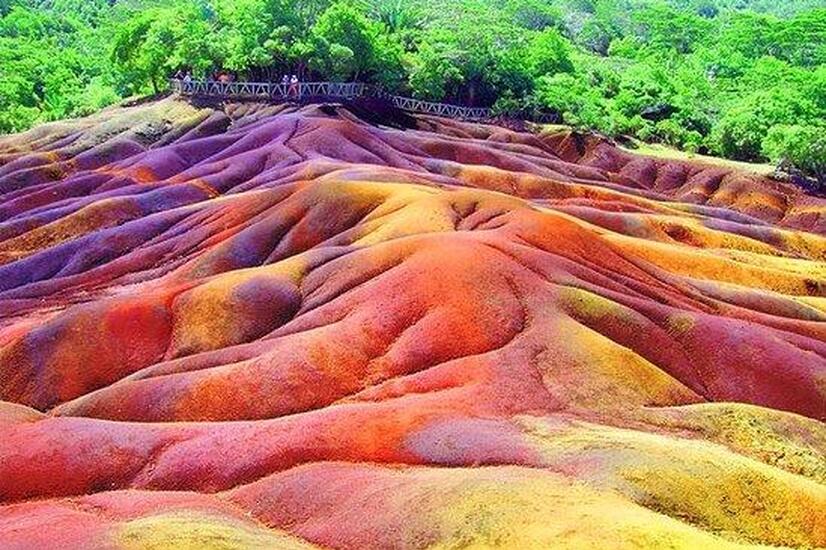
Known as the "Land of the seven colors of Chamarel" in Mauritius, beyond the beaches and palm trees, can be found a striking collection of colorful dunes of volcanic origin. The colors evolved through the transformation of basaltic lava into clay minerals. These minerals, mixed with the sand of the dunes, create a chromatic symphony with tones ranging from violet to red or blue, through yellow, brown, and green. The intensity of the coloring itself varies depending on the light of the day, although dawn is the best time to enjoy this unique landscape.
